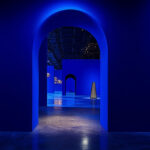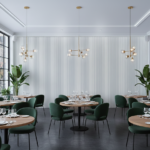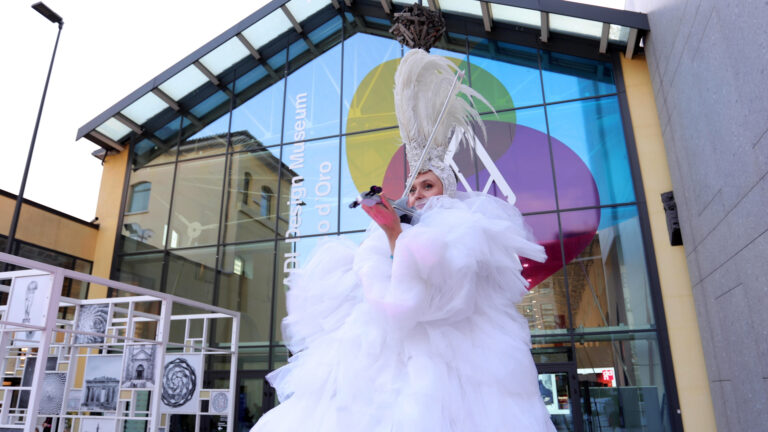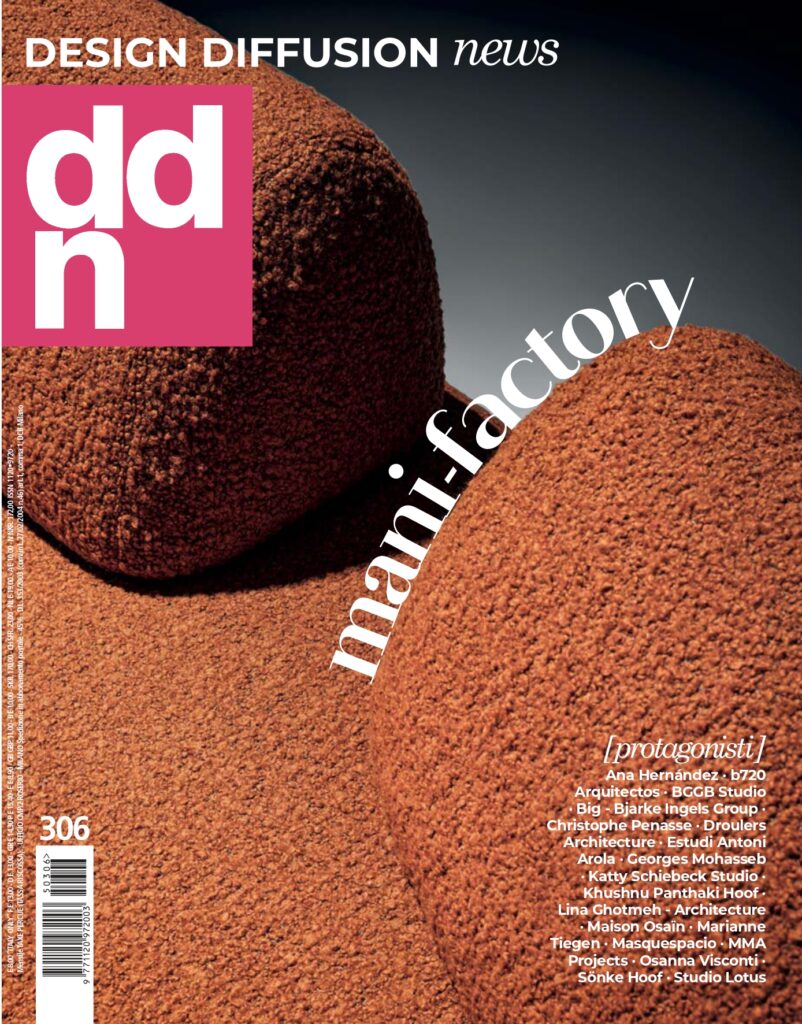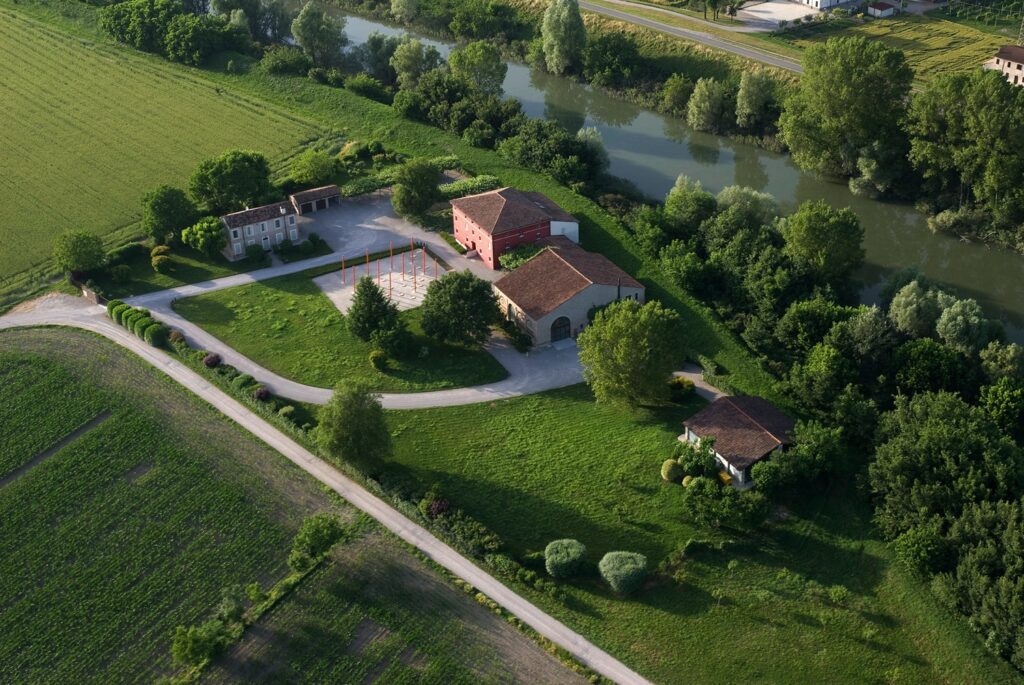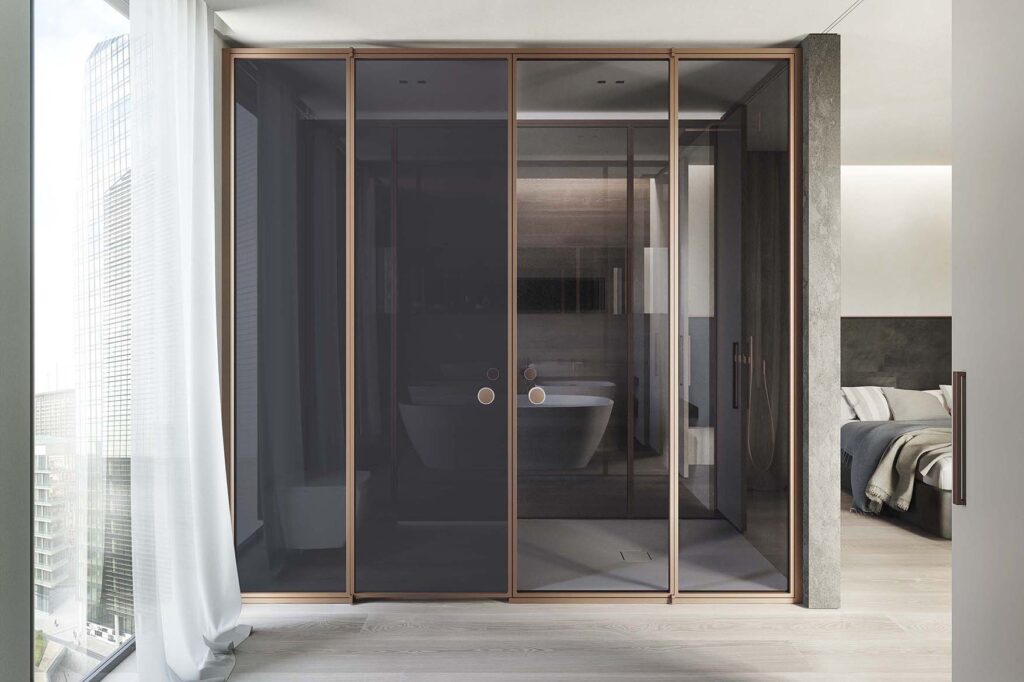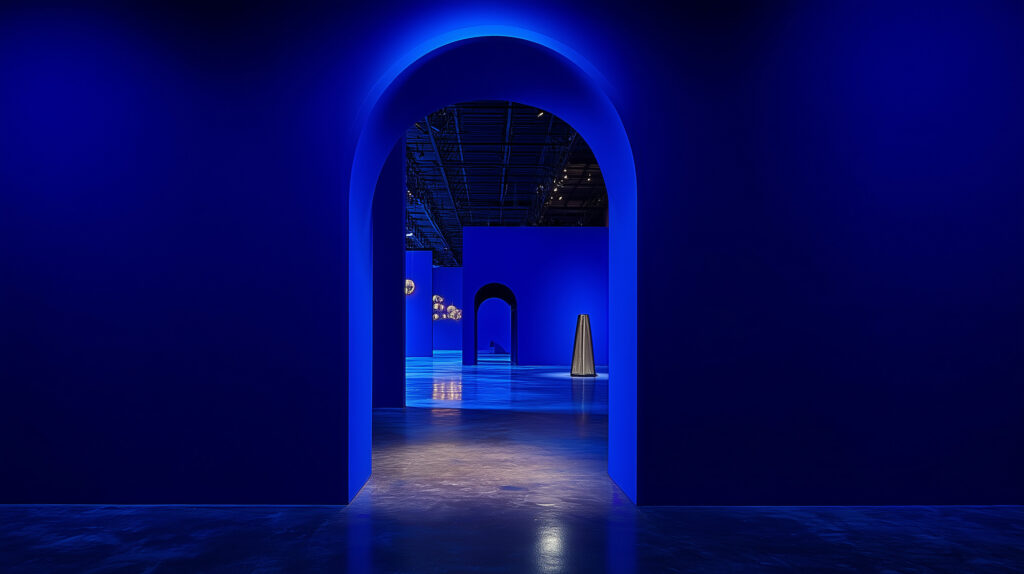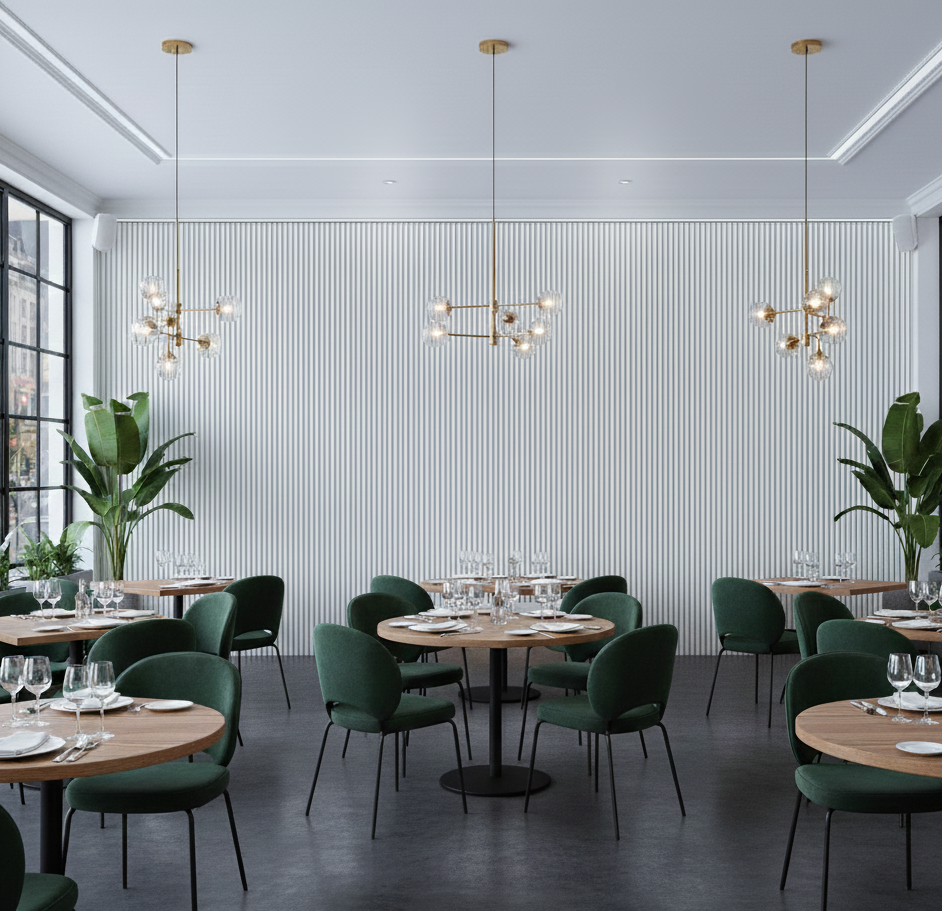One of the most iconic streets of luxury in the fashion district reinterprets its identity
On the occasion of Milan Design Week 2025, Via della Spiga is undergoing a remarkable transformation. Through the “Prismatique” project, one of the most iconic streets of luxury in Milan’s Quadrilatero della Moda is reimagining its identity, merging tradition and innovation in a vision directed towards the future.
Prismatique, the Design Excellence of Nick Maltese
The project is the result of a collective effort promoted by the Associazione Amici di Via della Spiga, active since 1983 in enhancing and animating the famous Milanese street. The organization, logistics, and operational management have been entrusted to Emmeventi – Events & Communication Agency, founded and directed by Sabrina Iencinella, renowned for her ability to turn every event into a work of art. With over twenty years of experience in designing and creating exclusive events that combine design and art in unique emotional and sensory journeys, Emmeventi boasts an impressive portfolio of successes, establishing itself as a reference point in the sector. On the creative front, Prismatique relies on the design excellence of Nick Maltese Studio, led by Nick Maltese and Fede Pagetti.
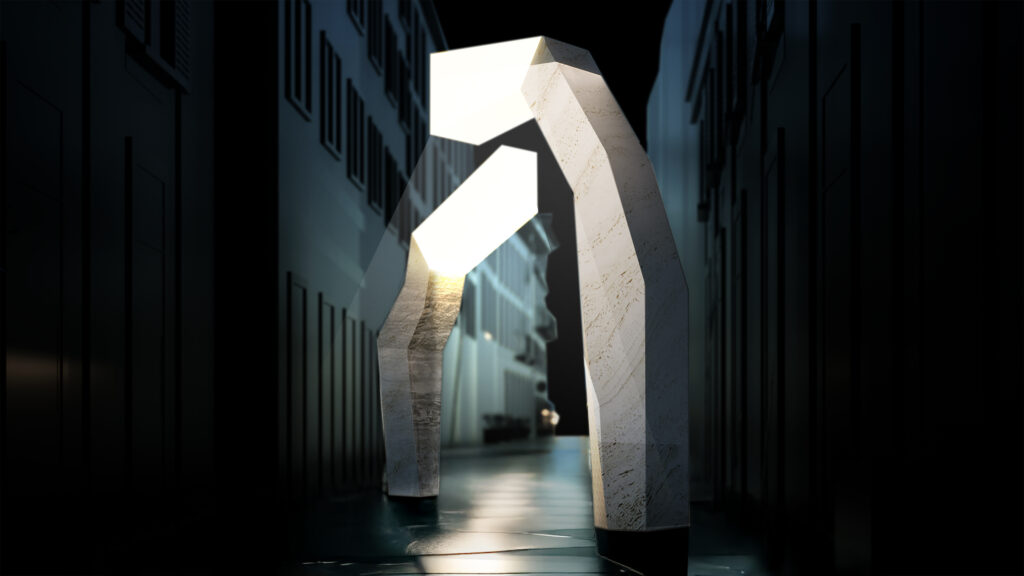
A Visual and Perceptive Connection Between the Two Extremes of Via della Spiga
The studio, now renowned for its imaginative interior designs in hospitality, dining, and entertainment, has also stood out in urban installations, as evidenced by the “Dream Up” project, the striking multi-installation that gained significant attention at the Milan Fuorisalone last year. With its strong scenic impact, Prismatique aims to create a visual and perceptive connection between the two ends of Via della Spiga, respectively linked to two iconic arteries of Milan’s urban fabric: Via Manzoni to the north and Corso di Porta Venezia to the south.
The Noble and Multifaceted History of Via della Spiga
At the same time, the project aims to celebrate and reinterpret the historical heritage of the street, enhancing its identity and tradition. The two designers emphasize how Via della Spiga boasts a noble and multifaceted history, deeply rooted in Milanese culture. It is a place of great historical value, where Cesare Correnti wrote the Manifesto of the Five Days of Milan, as recalled by the plaque at number 30. Until the late 1960s, the street retained an authentically popular soul, a microcosm of daily life embedded in a city already looking toward the future. Stories from those who lived in that era paint images of a time when the rhythm of the street was set by the lottery booth, the butcher calling customers by name, the greengrocer, stationery shops, and the historic Drogheria Centrale, which somehow foreshadowed the street’s evolution into luxury.
There was even a tiny pastry shop, which became part of the collective memory of the city. Milanese writer and journalist Guido Vergani recalled it with irony, evoking the amused expressions of children in front of its singular owner, a testament to how even the most curious details shape the identity of a place. A decade later, Via della Spiga became a witness and protagonist of a radical transformation, evolving into a crossroads between architectural avant-garde and high fashion. Today, the street is a sophisticated gallery hosting top fashion brands alongside visionary startups, maintaining its ability to reinvent itself. It is from this historical reflection that the Prismatique project was born. “We started from Via della Spiga’s past to define its future, seeking a language capable of enhancing its uniqueness. This led to the idea of creating two scenic portals at either end of the street: one made of three staggered elements, which form a tunnel in perspective, and the other a single monolithic block. Far from traditional urban gateways, these portals aim to serve as enigmatic thresholds, designed to immerse visitors in a near-ritual experience, projecting them into a new dimension.” The structures draw inspiration from brutalist aesthetics, with essential forms and sharp geometric cuts, free of unnecessary ornamentation.

The Scenic Impact and Imposing Presence of Prismatique’s Portals
The surfaces are covered in Bianco Sibillino, a precious travertine with a refined luminosity and delicate cream veins, exclusively quarried in San Pietro’s quarry in Acquasanta, in the heart of the Piceno region. Selected for Prismatique by Emmeventi in collaboration with Eurobuilding by Umberto Antonelli, a leader in the processing and supply of premium stone materials, this travertine gives the portals extraordinary expressive power: their monumentality evokes the primordial solidity of erratic boulders, while the plastic twists of the surfaces seem to evoke the dynamic elegance of ancient prehistoric creatures. A perfect balance between memory and innovation, between material and vision. The scenic impact and grandeur of the Prismatique portals are further enhanced by a sophisticated decorative intervention: engravings of fashion motifs pressed into the travertine and an original artwork blending art, design, and high fashion. This piece, strongly supported by Nick Maltese Studio, was created by marble sculptor Giuliano Giuliani, with an exceptional contribution from Graziano Ricami, a company that has been a reference in the luxury sector for over thirty years, providing exclusive embroidery to the most prestigious high-fashion brands.
For this installation, Graziano Ricami introduced an innovative marquetry technique that intertwines Bianco Sibillino travertine with textile inserts inspired by couture textures, creating a surprising dialogue between materials. “The prismatic form of each portal, strictly geometric, gains further depth in its interaction with this stone artifact, where the ‘embroidered’ decoration recalls the world of tailoring,” explain Nick Maltese and Fede Pagetti. “It’s a meeting of contrasts, as we like it: on one side, the elegant roughness of the stone; on the other, the softness of the fabrics. But it’s also a tribute to Milan’s distinctive ability to combine craftsmanship and innovation, generating a fertile dialogue between design, art, and fashion.” In this fusion of materials, shapes, and languages, the distinctive character of Prismatique reveals itself: a multisensory and polysemantic experience that celebrates the identity of Via della Spiga, propelling it into a new aesthetic and cultural dimension. The materiality of the worked travertine and the “mineral” embroidery—also created live—unites with the changing light throughout the day, the sounds of the city reverberating between the structures, and the architectural views where the past and modernism intertwine, framed by the perspective cuts of the installations. The project signed by Nick Maltese Studio gives life to an immersive experience, capable of engaging the senses and emotions in a continuous interaction between space, time, and perception.
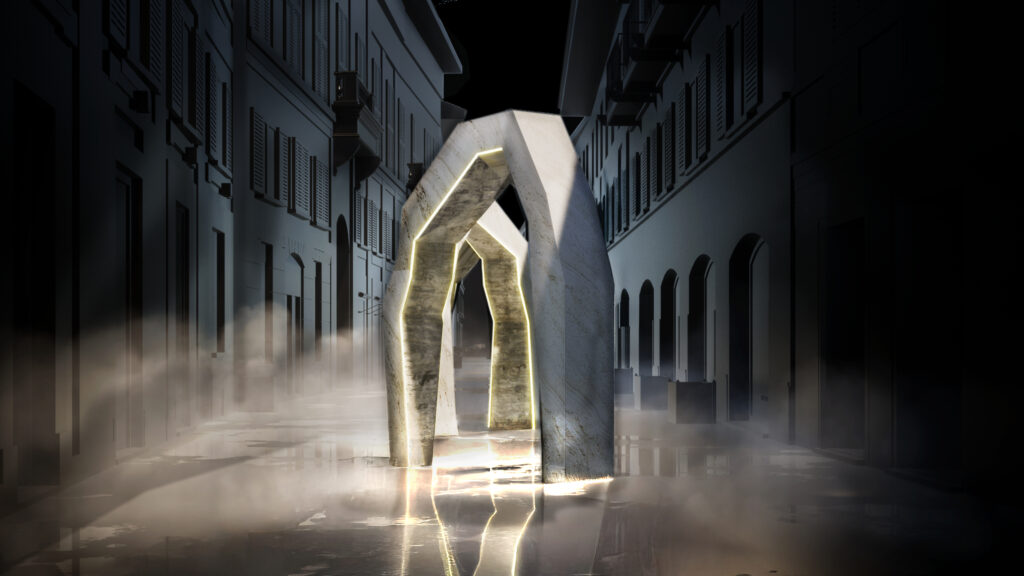
The Scent is Stimulated by the Fresh and Light Notes of the Prismatique Fragrance
Enhancing its impact is another sensory layer. The sense of smell is stimulated by the enveloping fresh and light notes of the Prismatique fragrance, specially created by perfumer Martino Cerizza from Opify SRL and diffused into the air through special diffusion systems developed by Visioni Olfattive. The sense of hearing is delighted by the sound design created and curated by Palazzo Daphne for Prismatique. A soundtrack that is rational, brutalist, and post-apocalyptic, combining ethical and aesthetic sound elements, immersing the visitor in a dreamlike and hypnotic spiral. Taste also finds its place in the experience: during the vernissage, in an elegant historical courtyard, guests will be able to taste food & drinks inspired by the “prismaticity” of the installation, served on iconic marble trays. In its entirety, Prismatique is an harmonious composition of stimuli, an innovative language through which the city tells its own story subliminally, suspended between the strength of its historical heritage and a vision directed towards the future. The structure of the Prismatique portals is a refined balance of materials and technology.
A Refined Balance of Materials and Technology
Made of precious Bianco Sibillino travertine—a stone with extraordinary luminosity—the portals transform at nightfall thanks to a sophisticated LED lighting system provided by Event Management SRL. The light strips, integrated into the structures, create a striking play of light and shadow, alternating solid and empty spaces in a dynamic composition that amplifies the threshold effect and makes the installation even more scenic.
The Designers: “Every Visitor is Free to Explore, Stop, Photograph, and Be Surprised by the ‘Moving’ Architecture”
But Prismatique doesn’t end with the portals. The path that crosses Via della Spiga, a true urban canyon between Corso di Porta Venezia and Via Manzoni, is enriched by two imposing “statues of light” over three and a half meters tall. “Two monument-scale floor lamps,” explain Nick Maltese and Fede Pagetti, “which become the visual centerpiece of the installation. Iconic and with strong sculptural character, these superlamps impose themselves as new urban landmarks: they capture the gaze, silently converse with the surrounding architecture, and engage passersby in an immersive visual experience.” Similar in form and composition to the portals, these truncated structures stand out for one unique feature: at their top, an opaline extension reaches out into space, illuminated from within by warm LED lights, again provided by Event Management SRL, creating an enveloping and sophisticated effect. An authentic jewel of lighting design that reinterprets light as both a scenic and functional element. Through these installations, Prismatique reinvents Via della Spiga in a futuristic and postmodern key, while at the same time paying homage to Milan’s architectural tradition, which has made stone a symbol of expressive continuity, and to the world of fashion, a distinctive element of the city and a driving force of its creative dynamism. With a vision that integrates aesthetics and sustainability, the street transforms into an open-air theater where—as the designers point out—”the city meets art and fashion dialogues with architecture, giving rise to a new urban vocabulary made of wonder, elegance, and innovation.” Prismatique proposes itself as an experiential journey, where each portal becomes a step in a discovery process. Every visitor is free to explore, stop, photograph, and be surprised by the “moving” architecture of the installation. It’s an invitation to observe Milan with new eyes, rediscovering it as a laboratory of ideas and trends, where every passage and every landscape transforms into an ideal bridge between the past and the future.



